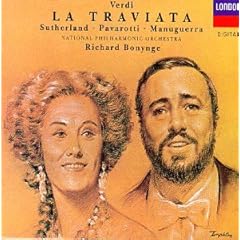More recently, again in the state of Texas, an inmate named Anthony Graves was finally freed after 18 years in prison for a crime he did not commit. He was also on death row. Melissa Block in All Things Considered on NPR interviewed Pamela Colloff, editor of Texas Monthly who wrote an in-depth article about the case. Extract of the radio transcript
BLOCK: Let's recap this case. Anthony Graves was convicted of capital murder. That conviction was actually overturned 12 years later, but he was awaiting retrial on capital murder charges. Now, the D.A.'s office says, unequivocally, he is an innocent man.This would surely be another case to support the abolition of the death penalty. Unlike Cameron Todd Willingham, Anthony Graves is now free. And alive.
Ms. COLLOFF: Yes. What's interesting is that they say that unequivocally. This is not the sort of situation where a D.A. is saying we don't have enough evidence to move forward or this case is too old to prosecute. There is a remarkable press conference this morning that the district attorney held in Brenham, Texas, in which he and his special prosecutor said this man is innocent. We have absolutely no shred of evidence that connects him to this crime.
BLOCK: Well, how was it that Anthony Graves was first implicated in these murders back in 1992?
Ms. COLLOFF: This began because Robert Carter, the man who did in fact commit this crime and he was later executed for committing this crime, was asked repeatedly on the night of his arrest who had helped him. The Texas rangers who were investigating the case believed that one person could not have been responsible for the murders of six people. Finally, after a lengthy interrogation, Robert Carter came up with the name of Anthony Graves, a person he knew very, very casually, and that was the beginning.
BLOCK: And there was no physical evidence connecting Anthony Graves with the murders. He had an alibi, witnesses to back it up. What is the explanation for what happened with this case? Pamela, was this, as we said, missteps by the D.A., or was it something really more pernicious? Was there a willful misconduct on the part of prosecutors?
Ms. COLLOFF: The night before Robert Carter, the man who committed this crime, took the stand at Anthony Graves' trial, he told the district attorney, I did this myself. Anthony Graves had nothing to do with this. The district attorney at that point was obligated to disclose that information to the defense. He claimed that he did. The defense said that he never disclosed that. And there's no evidence to support that he ever did disclose that information. The following day Robert Carter took the stand, he testified against Anthony Graves and delivered the testimony that the district attorney had hoped he would. A federal court later found that when Mr. Sebesta took that testimony, he knew that that was perjured testimony.
BLOCK: It's worth noting that it was a journalism class engaged in investigating wrongful prosecutions that led to Anthony Graves' original conviction being overturned, right?
Ms. COLLOFF: That's correct. There's a professor here in Houston at University of St. Thomas, Nicole Casarez, she and her journalism students spent eight years investigating this case and turned up some remarkable facts. They went back. They reinvestigated the case. They found new people to talk about what had happened. They pored over this incredible lengthy and complicated court record. And what Nicole and her students put together was a very damning picture of miscarriage of justice.
BLOCK: Anthony Graves was, what, 26 when he was arrested. He leaves prison now at age 45 - 18 years of his life behind bars. What happens with him now?
Ms. COLLOFF: I think that's the question. I talked to him very briefly yesterday, and he said this is the beginning - I think, meaning, this is the beginning of my life or the rest of my life. But keep in mind he will get no money from the state of Texas. He's 45. He has nothing to his name. When he called his mother yesterday to tell her that he was finally being let go, he didn't know how to use his attorney's cell phone. And no amount of money, even if he were being given money, I think could give back what's been taken from him.
BLOCK: Pamela Colloff, it is a chilling and terrifying story. Thank you very much.
What is worrying is the miscarriage of justice that allowed him to be imprisoned for so long in the first place. That is a separate issue and just as important.











